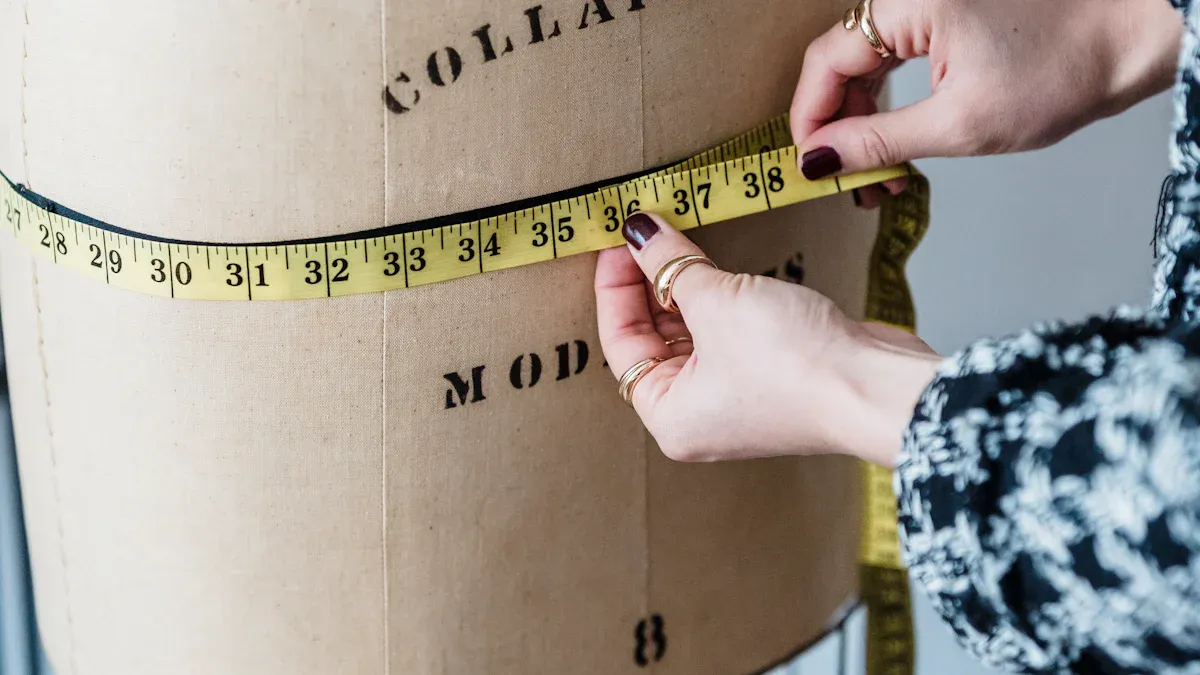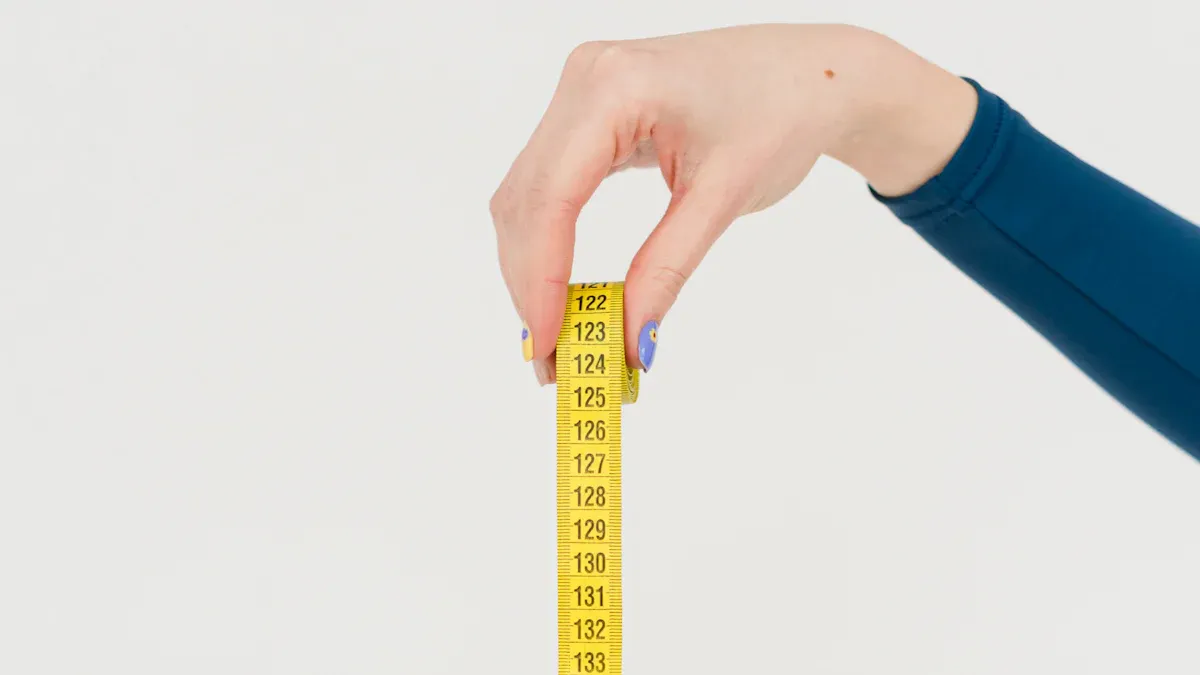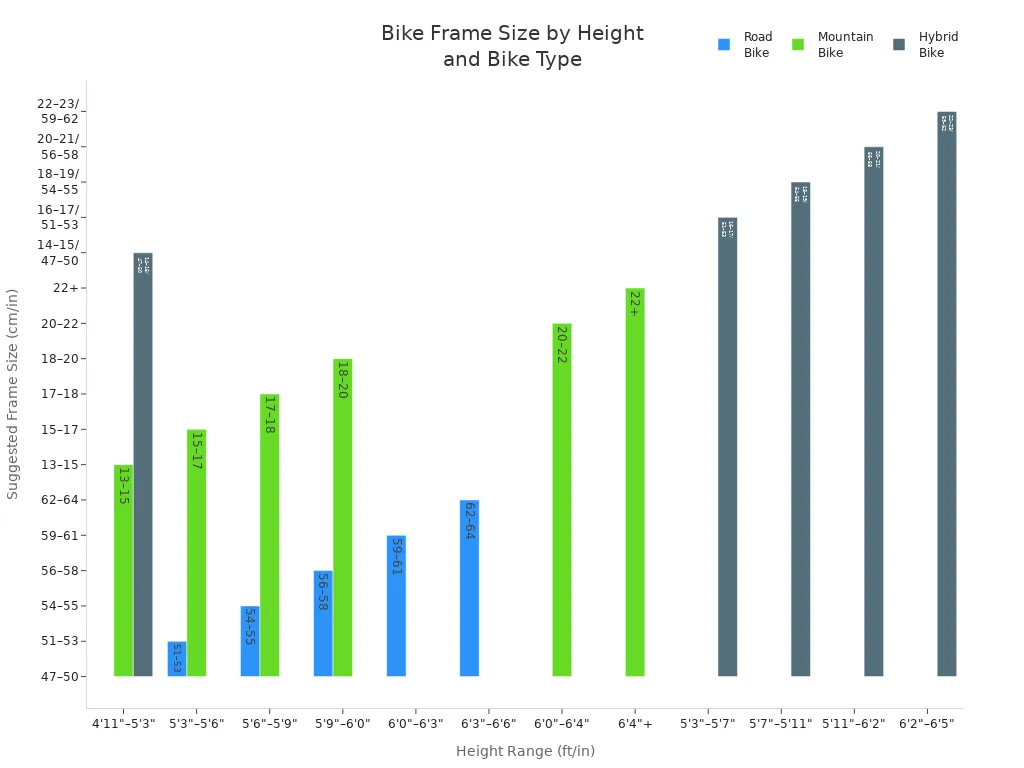
You might wonder how to find the perfect bike frame size for height. The answer is simple: you need both height and inseam measurements. While height and inseam both help guide your choice, inseam measurement matters more for comfort and safety. Experts say inseam measurement gives you a better fit because it matches your leg length and ensures proper standover clearance. If you only use height, you could end up with a bike that feels wrong, especially if your legs are longer or shorter than average. Grab a tape measure, a book, and a friend to help. With the right measurement, you can ride with confidence and comfort.
Key Takeaways
Measure your height and inseam with care. This helps you find the right bike frame size. It makes riding safe and comfortable.
Inseam measurement is very important. It matches your leg length. It helps you stand over the bike easily.
Use a tape measure, a wall, and a book. Ask a friend to help you measure height and inseam. This gives you good numbers.
Look at bike sizing charts. These charts use height and inseam. They help you choose the best frame size for your bike.
Always try riding your bike first. Think about getting a professional fitting. This helps you feel better and ride well.
Why Size Matters
Comfort
You want every ride to feel good from start to finish. When your bike frame matches your body, you get a comfortable riding position that supports your back, shoulders, and wrists. If the frame is too big or too small, you might stretch too far or feel cramped. Over time, this can lead to back pain, wrist soreness, and tired muscles.
Tip: A proper fit helps you avoid discomfort and lets you enjoy longer rides without aches.
Here are some common problems you might face with the wrong frame size:
You need to extend the seatpost too much, which can damage the frame.
Your saddle sits too far forward or backward, making it hard to find a good fit.
You notice toe overlap with the front wheel, especially if the frame is too small.
Handlebar width doesn’t match your shoulders, causing pain in your hands and wrists.
Performance
A bike that fits you well helps you pedal more efficiently. You get better power transfer because your legs move naturally and your posture stays strong. When you ride a bike that fits, you feel confident and in control, whether you climb hills or take sharp turns.
You can reach the handlebars easily, so you steer smoothly.
Your saddle height lets you extend your legs fully, boosting your speed and endurance.
You avoid using a long stem or too many spacers, which can hurt your handling.
Test rides and accurate measurements help you find the best fit for your style.
Safety
Safety matters every time you get on your bike. If your frame size is wrong, you risk losing control or crashing. A larger frame can feel heavy and hard to handle, while a smaller frame feels twitchy and unstable. Poor fit increases the chance of accidents, especially on rough roads or with clipless pedals.
Bad posture from the wrong fit can lead to fatigue and slow reaction times.
You might need to adjust your stem or saddle, but these fixes only help a little.
Studies show that a good fit makes you less likely to feel pain while riding, which keeps you alert and safe.
Tools Needed
Before you start measuring, gather a few simple tools. These will help you get the most accurate numbers for your bike fit. You probably have most of these at home.
Tape measure
A sturdy wall
Pen and paper
A friend or family member to help
Tip: Having someone assist you makes the process much easier and helps you avoid mistakes.
Tape Measure
A tape measure is the main tool you need. It lets you check both your height and inseam. Most people use a soft tape measure, like the kind used for sewing, but a metal one works too. Make sure the tape measure is long enough to reach from your head to the floor.
Tape measures give you a good starting point for bike fitting. They are easy to use and help you get quick results. However, they do not control for angles or viewing errors. Professional bike fitters sometimes use video or laser tools for even more accuracy, but for home use, a tape measure works well if you follow the steps carefully.
Wall
You need a flat, sturdy wall to stand against. The wall helps you stand straight and keeps your body in the right position. When you measure your height, the wall acts as a guide so you do not lean forward or backward. For inseam measurement, the wall helps you stay balanced while you press the book or dowel between your legs.
Book
A large, hardback book works best for measuring your inseam. Place the book between your legs and push it up until it touches your pubic bone. This simulates the way you sit on a bike saddle. Some bike fitters use a thick dowel or even a yardstick, but a book is easy to find and simple to use. Make sure the book is level and pressed firmly for the most accurate measurement.
Note: If you want to be extra precise, ask your helper to make sure the book is level and to read the measurement for you.
With these tools and a little help, you can measure yourself just like the pros do. Accurate measurements mean a better bike fit and a more comfortable ride.
Height Measurement
Measuring your height the right way makes a big difference when you want to measure bike size. Many people ask how to measure bike size, but they forget that height measurement is the first step. If you want to know how to measure frame size, you need to start with your true height. Here’s how you can do it at home.
Steps
Follow these steps to get an accurate height measurement:
Take off your shoes and stand with your back flat against a wall. Make sure your feet are about 6-8 inches apart.
Stand up straight. Keep your shoulders back and look forward.
Ask a friend to help. Have them place a hardcover book flat on your head, making sure the book touches the wall.
Mark the spot where the bottom of the book meets the wall.
Step away and use a tape measure to measure from the floor to the mark. This number is your height.
Tip: Wear thin pants or cycling shorts for the most accurate measurement. A friend can help you avoid mistakes.
You need this height measurement to measure bike size and to check sizing charts. When you measure bike frame, always use your real height, not what’s on your driver’s license. If you want to know how to measure bike size for different types of bikes, repeat this process each time you check your fit.
Common Errors
Many people make mistakes when they measure bike size. Here are some things to watch out for:
Wearing shoes or thick socks adds extra height.
Slouching or leaning forward changes your measurement.
Not keeping the book level gives you the wrong number.
Measuring alone can lead to errors. Always ask for help if you can.
If you want to know how to measure frame size or measure bike frame for the best fit, double-check your height measurement. This step helps you find the right bike and keeps you comfortable on every ride.
Inseam Measurement

Getting your inseam right is the secret to finding the perfect bike fit. If you want to know how to measure bike size, you need to measure your inseam first. This number tells you how high your saddle should be and helps you measure bike size for comfort and safety. Let’s walk through the steps.
Steps
Stand with your back against a wall. Make sure your feet are about shoulder-width apart.
Grab a sturdy book. Place it between your legs, just like you would sit on a bike saddle. Push the book up until it touches your pubic bone.
Keep the book level and snug. Ask a friend to help if you can.
Mark the spot where the top of the book meets the wall.
Step away and use a tape measure to check the distance from the floor to the mark. This is your inseam measurement.
Cycling experts say this is the best way to measure bike size. The inseam measurement matches the distance from your saddle to the pedals. If you want to measure bike frame for a road, mountain, or city bike, always start with this method. It gives you the most accurate number for how to measure frame size.
Tip: Always measure your inseam with your shoes off and stand up straight. This helps you avoid mistakes and get the right bike fit.
Alternative Methods
Sometimes you want to try a different way to measure bike size. One option is the standing height minus sitting height method. First, measure your height while standing. Next, sit on a flat surface and measure from the floor to the top of your head. Subtract the sitting height from your standing height. The result is your inseam. This method works if you can’t use a wall or book, but it may not be as precise.
Manual measurements can have errors, especially if you do them alone. Digital apps and 3D scanners can help, but they also have limits. Apps sometimes miss the right spot for your inseam, and small movements can change the result. If you want to measure bike frame or learn how to measure frame size, try to use the standard method and ask for help.
Here’s a quick guide for how to measure bike size using your inseam for different bikes:
Bike Type | Inseam-to-Frame Size Ratio | How to Measure Bike Size |
|---|---|---|
Mountain Bike | Measure bike frame in inches | |
Road Bike | 0.70 × inseam | Measure bike frame in inches |
City Bike | 0.68 × inseam | Measure bike frame in inches |
Kids Bike | Wheel diameter (inches) | Measure bike size by wheel size |
If you want to know how to measure bike size or how to measure frame size, always start with your inseam. This measurement is the key to a bike that feels just right.
Bike Frame Size for Height

Using Measurements
When you want to find the right bike frame size for height, you need to use both your height and inseam. These two measurements work together to help you choose a bike that fits your body. Many people think height alone is enough, but inseam tells you how much standover height you need. Standover height is the space between your body and the top tube when you stand over the bike. This space keeps you safe and comfortable.
Here’s how you can use your measurements:
Measure your height by standing straight against a wall. Mark the top of your head and measure down to the floor.
Measure your inseam by standing with your back to a wall. Place a book between your legs, push it up to your pubic bone, and measure from the floor to the top of the book.
Use these numbers to check a bike size chart. The chart will show you the best bike size for height and inseam.
You should always check the standover height for your bike. For road and hybrid bikes, you want 1-2 inches of clearance. For mountain bikes, you need 2-4 inches. This helps you get on and off the bike safely. If you only use height, you might pick a bike that feels wrong. Inseam is more important because it matches your leg length and helps you measure bike size for comfort.
🚲 Tip: If your inseam and height put you between two sizes, go with the smaller frame for better control. You can always adjust the seat and handlebars.
Bike sizing charts use both height and inseam to give you a range of frame sizes. This is why a good bike sizing guide always asks for both numbers. When you measure bike frame, you want to make sure the standover height matches your inseam. This is the best way to measure bike size for height and get a bike that feels just right.
Bike Sizing Charts
Bike sizing charts make it easy to match your height and inseam to the correct frame size. Each bike type—road, mountain, and hybrid—has its own chart. These charts show you the best bike size for height and inseam. You can use a bike sizing guide to compare your measurements to the recommended frame size.
Here’s a sample bike size chart for road, mountain, and hybrid bikes:
Bike Type | Height Range (ft/in) | Height Range (cm) | Suggested Frame Size | General Size | Standover Clearance Recommendation |
|---|---|---|---|---|---|
Road Bike | 4’11” – 5’3″ | 150 – 160 | 47 – 50 cm | XS | 1-2 inches (2-5 cm) |
5’3″ – 5’6″ | 160 – 168 | 51 – 53 cm | S | ||
5’6″ – 5’9″ | 168 – 175 | 54 – 55 cm | M | ||
5’9″ – 6’0″ | 175 – 183 | 56 – 58 cm | L | ||
6’0″ – 6’3″ | 183 – 191 | 59 – 61 cm | XL | ||
6’3″ – 6’6″ | 191 – 198 | 62 – 64 cm | XXL | ||
Mountain Bike | 4’11” – 5’3″ | 150 – 160 | 13″ – 15″ | XS | 2-4 inches (5-10 cm) |
5’3″ – 5’6″ | 160 – 168 | 15″ – 17″ | S | ||
5’6″ – 5’9″ | 168 – 175 | 17″ – 18″ | M | ||
5’9″ – 6’0″ | 175 – 183 | 18″ – 20″ | L | ||
6’0″ – 6’4″ | 183 – 193 | 20″ – 22″ | XL | ||
6’4″+ | 193+ | 22″+ | XXL | ||
Hybrid Bike | 4’11” – 5’3″ | 150 – 160 | 14″ – 15″ / 47-50 cm | XS/S | 1-2 inches (2-5 cm) |
5’3″ – 5’7″ | 160 – 170 | 16″ – 17″ / 51-53 cm | S/M | ||
5’7″ – 5’11” | 170 – 180 | 18″ – 19″ / 54-55 cm | M/L | ||
5’11” – 6’2″ | 180 – 188 | 20″ – 21″ / 56-58 cm | L/XL | ||
6’2″ – 6’5″ | 188 – 196 | 22″ – 23″ / 59-62 cm | XL/XXL |
You can also see how bike frame size for height changes with different bike types in this chart:

When you use a bike size chart, always check both your height and inseam. Some brands use numbers (like 54 cm), while others use letters (like M or L). A bike sizing guide will help you compare these sizes. Remember, a 54 cm frame in one brand might fit differently in another. That’s why you should always measure bike size with your own measurements, not just the label.
Let’s look at an example:
Your height is 5’8″ (173 cm).
Your inseam is 32″ (81 cm).
For a road bike, the bike size chart suggests a 54–55 cm frame (M).
For a mountain bike, the chart suggests a 17–18″ frame (M).
Check the standover height. For a road bike, you want 1-2 inches of clearance between your inseam and the top tube. For a mountain bike, you want 2-4 inches. If you measure bike frame and the standover height is too high, try the next smaller size.
📝 Note: Inseam is the most important measurement for bike sizing. It helps you measure bike size for height and makes sure you get the right standover height. Height gives you a starting point, but inseam gives you the best fit.
Bike sizing charts are a key part of every bike sizing guide. They help you measure bike size for height and inseam, so you can ride safely and comfortably. Always use your own measurements, check the bike size chart, and test the standover height before you buy.
Fit Preferences
Riding Style
When you choose a bike, your riding style plays a big role in how the bike will fit. You might love fast road rides, rough mountain trails, or smooth city streets. Each style needs a different approach to fit your bike. Your comfort and flexibility matter just as much as your measurements. Some riders want more standover clearance, while others prefer a snug fit for better control.
Flexibility and comfort help you decide if you want a bigger or smaller frame.
Adjustments like saddle height and handlebar reach let you fine-tune the fit.
Riders with injuries or special needs often need extra changes for the best fit.
Test rides help you feel how the bike responds to your body and style.
You can see how riding style changes frame size and geometry in this table:
Riding Style | Frame Size Adjustment | Frame Geometry Characteristics | Additional Fitting Considerations |
|---|---|---|---|
Park | Slightly smaller frame | Shorter top tube, steeper head tube angle | Focus on quick turns and responsiveness |
Trail | Larger frame | Longer top tube, slacker head tube angle | Stability and comfort on jumps |
Street | Intermediate size | Balanced geometry, sturdy frame | Personal preference matters most |
You can adjust saddle height, seat post, and handlebars to match your style. These changes help you fit your bike perfectly, whether you want speed, comfort, or control.
Test Ride
You should always test ride a bike before you buy it. A test ride lets you feel the fit and see if the bike matches your body and riding style. You might notice small things, like how your knees bend or how your hands rest on the bars. These details matter for comfort and safety.
If you want the best fit, consider a professional bike fitting. Experts look at your body, flexibility, and riding habits. They use tools to measure saddle height, handlebar reach, and foot position. You get a bike that fits you, not just your measurements. A bike fitting can prevent pain and boost your performance. You get advice on saddle choice, crank length, and handlebar width. The process takes time, but you end up with a bike that feels great every ride.
Tip: A test ride and bike fitting help you fit your bike to your unique needs. You get comfort, control, and confidence every time you ride.
Reference
Steps Summary
You want to make sure you get the right bike frame size. Here’s a simple step-by-step guide you can follow every time you use a bike sizing guide:
Measure your height and cycling inseam with a tape measure, a wall, and a book. This helps you simulate sitting on a bike saddle.
Find the manufacturer’s bike size chart. Match your height and inseam to the recommended bike frame size.
Look at the bike’s geometry chart. Pay attention to Stack and Reach measurements. These numbers help you understand how the bike will fit you.
Compare Stack and Reach if you’re choosing between different bikes. This helps you pick the best fit for your body.
Check the standover height. You want 1-3 inches of clearance between your inseam and the top tube.
Think about your riding goals. If you want a more aggressive ride, choose lower Stack and longer Reach. For comfort, pick higher Stack and shorter Reach.
Use your arm length as a tie-breaker if you’re stuck between two sizes.
If you’re unsure, get a professional bike fitting. This is especially helpful for competitive riders or high-end bikes.
Remember, sizing charts are a great starting point, but your comfort and riding style matter most. Always test ride if you can.
Sizing Chart Links
You can find up-to-date bike size chart resources online. These sites offer detailed charts for every bike type and expert advice to help you use a bike sizing guide with confidence.
IceBike.org
IceBike.org gives you a complete bike sizing guide. You’ll find bike size charts for mountain, road, hybrid, and kids’ bikes. The site explains how to use your height and inseam, and why proper fit matters for comfort and safety.SixThreeZero.com
SixThreeZero.com features a 2023 bike size chart and an online fitting assessment. You can enter your measurements and get personalized recommendations for bike frame size, type, and fit. The site updates its charts often and covers frame type, tire size, and riding preferences.
Tip: Always check the bike size chart for your specific bike type. Different brands use different sizing systems, so never assume one size fits all.
Common mistakes happen when you rely only on numbers or ignore your body’s proportions. Riders at the extremes of height or between sizes need to pay extra attention. Bike geometry can change from one brand to another, so use a bike sizing guide and try to test ride before you buy.
Getting your height and inseam right is the first step to a great bike fit. Use these numbers with sizing charts, but always think about your comfort and riding style. If you feel unsure, try a test ride or visit a professional fitter for extra help. Remember, a well-fitted bike makes every ride smoother and safer. Enjoy the freedom and fun that comes with a bike that truly fits you!
FAQ
How do I know if my bike frame is too big or too small?
If you struggle to touch the ground or feel stretched out, your frame might be too big. If you feel cramped or your knees hit the handlebars, it could be too small. Always check your comfort and standover height.
Can I use only my height to pick a bike size?
You can start with your height, but you really need your inseam for the best fit. Inseam tells you how much space you have over the frame. This helps you ride safely and comfortably.
What if I fall between two bike sizes?
Pick the smaller size if you want better control. You can adjust the seat and handlebars for comfort. Test rides help you decide which size feels right for your body and riding style.
Do I need a professional bike fitting?
A professional fitting helps if you ride a lot or have special needs. You get expert advice on saddle height, handlebar reach, and more. For most riders, careful measuring and a test ride work well.
See Also
Discover Your Perfect Bike Fit Using Frame Size Tools
Steps To Measure Your Bike Frame For Optimal Riding
Guide To Using Bike Frame Size Charts For Precision
Key Factors That Determine The Best Bike Frame Fit
Understanding Mountain Bike Geometry To Choose The Right Size
